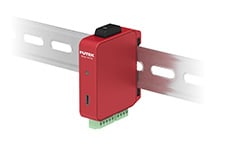What role do thrust force and torque measurement play in drilling?
Designers strive to better understand the heat generation and temperature changes during friction drilling operation on difficult-to-machine materials, and thrust force and torque measurement support this effort with crucial data on the cutting force.
What are other benefits of measuring thrust force and torque measurement in drilling?
Accurately measuring drilling torque and thrust also helps in the design of fixtures and the prediction of wear and tear of cutting tools. Based on the drilling measurement data, operators and manufacturing engineers can make the following optimizations:
• Prevent process failures
• Predict power drill or drill bit maintenance or replacement
• Investigate the drilling process parameters, including cutting speed, feed rate, drill bit geometry, and composition, on the output product quality.
Thrust Force and Torque Measurement in Surgical Drilling Applications
In remote robotic surgery, thrust force and torque in drilling systems offer valuable haptic feedback. As the surgeon conducts the procedure in a remote console, the tactile force and torque feedback of an electrically powered hand drill gives the surgeon a virtual sense of touch.
How it Works
In this application, the QMA150 Torque and Thrust Biaxial Sensor is mounted in between the power drill and the holding guiding bracket. While the sensor is bolted to the power drill and the bracket, the drill bit is free to pass thru the sensor central hole. FUTEK's Engineers can customize a bi-axial sensor to be embedded into the power drill if the application requires.
As the power drill operates, the thrust force and reaction torque is measured by the bi-axial sensor. Different drilling conditions and materials cause different thrust and drilling forces, which is captured by the sensor.
These measurements are sent directly to a paired instrument which provides excitation voltage and conditions the signal (filtering, amplification, digitalization). Depending on signal conditioner selection, the operator can either view the data on a digital load display (SensLog Handheld Display or IPM650 Panel Mount Display) or stream the data directly onto a PC or a PLC/DAQ for data logging, control loop safety interlock or alarming.
Based on the drilling measurement data, operators and manufacturing engineers can optimize the process, prevent process failures, predict power drill or drill bit maintenance or replacement, and investigate the drilling process parameters, including cutting speed, feed rate, drill bit geometry, and composition, on the output product quality.
Products in Use
QMA150 Custom Torque and Thrust Biaxial Sensor paired with the following signal conditioners:
- 2 x SensLog Handheld Display
- 2 x IPM650 - Panel Mount Display
- 2 x USB Series - Internal PCB with USB Digital Output
- 2 x IAA Series - Strain Gauge Analog Amplifier with Voltage Output
Contact Us
Please Contact Us with questions.
What role do thrust force and torque measurement play in drilling?
Designers strive to better understand the heat generation and temperature changes during friction drilling operation on difficult-to-machine materials, and thrust force and torque measurement support this effort with crucial data on the cutting force.
What are other benefits of measuring thrust force and torque measurement in drilling?
Accurately measuring drilling torque and thrust also helps in the design of fixtures and the prediction of wear and tear of cutting tools. Based on the drilling measurement data, operators and manufacturing engineers can make the following optimizations:
• Prevent process failures
• Predict power drill or drill bit maintenance or replacement
• Investigate the drilling process parameters, including cutting speed, feed rate, drill bit geometry, and composition, on the output product quality.
Thrust Force and Torque Measurement in Surgical Drilling Applications
In remote robotic surgery, thrust force and torque in drilling systems offer valuable haptic feedback. As the surgeon conducts the procedure in a remote console, the tactile force and torque feedback of an electrically powered hand drill gives the surgeon a virtual sense of touch.




